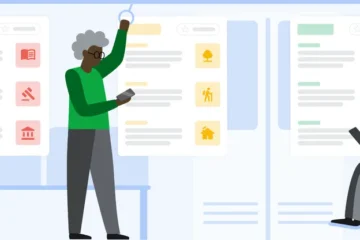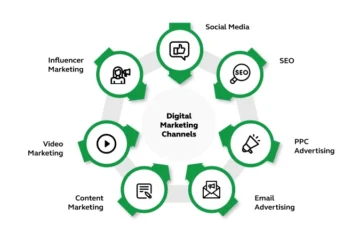
In a recent addition of Fast Company magazine, there is a great article on the future of office life and offices in general. They, like many, assume that work, as we used to experience it, will not return. However, there will still be offices and we will use them, but perhaps not all of us, all day, and every day, with no alternative. Some working from home or in shared spaces is here to stay.
Fast Company thinks that offices will become “corporate centres specifically meant to spur innovation and connection” . And Colliers International talks about future offices “designed to support collaboration and accelerate creativity and team spirit”. Let us reflect for a few minutes on what that means for those working in L&D.
It would be ridiculous if a centre of collaboration, creativity and team spirit was not fully owned by those responsible for the development of staff. How can L&D ensure that the changes planned will make office space more effective learning space? Well, here are five ways of ensuring that you have some influence on how these potential changes will materialise.
- You need to start thinking about how your physical spaces will look in 2022, now! If plans are already afoot, then you should be part of the group discussing things like usage, design and layout. If not, start to dream and scheme.
- This is a one-off opportunity to build workplaces as learning spaces. Don’t waste it! Think about the kind of resources that could be used that would encourage innovation, creativity, and the sharing of insight and ideas. It is about physical organisation of the space yes, but think of colour, resources, software that can help. So that when people move back, everything changes at once; physical workspace that encourages collaboration and sharing, as well as laptop workspace that does the same. The reason that Microsoft Teams has been so spectacularly successful is that it is a complete collaboration environment. Do not lose that ability to build team spaces physically, and virtually once you are back in the office for some part of the working week.
- Quiet spaces for individual, concentrated work could become individual learning spaces; small team spaces could become small team centres for creative thought and idea generation. All you would need would be, perhaps, some kind of electronic wall space; movable walls to stick multi-size and multi-colour Post-Its on or their electronic equivalents. Perhaps investing in software that allows creative ideas sharing is the right thing to do, right now. This would give you time to design appropriate templates for your organisation. When the reconfigured office space opens up, your ideas are right at its heart. If you let this opportunity go by, it won’t come back.
- In the future we will need to convince people that there is a good reason for the trek to the office. One reason will be to come together to share ideas or work on challenges. If you set up new ways of working which make the most of the opportunity to be together in the same physical space, then the other benefits of collective working such as shared values and culture will also emerge.
- Talk to as many people as possible. What would lure them back? What tools are missing right now? How best could they access help and share learning in a physical space? Focus on how you can help your people learn effectively, and share effectively. Ensure that learning emerges from the workflow and returns to improve the workflow. Be explicit about that.
There is a lot of dreaming to be done now, to make the best of what might happen in a year’s time. Start with a clean slate. Abandon everything you do so that, in your imagination at least, you can start with an empty office space and no learning infrastructure.
Now work out how you would begin all over again in order to build creative spaces in the physical and the virtual world. Focus on what you would love to do to transform learning, and gradually track to what is possible – but do not do this in isolation.
Feed the ideas back into the organisation, and validate them by talking to as many people as possible, so that you build some momentum. This could be the biggest opportunity of your entire career; don’t throw it away.
[“source=trainingjournal”]


